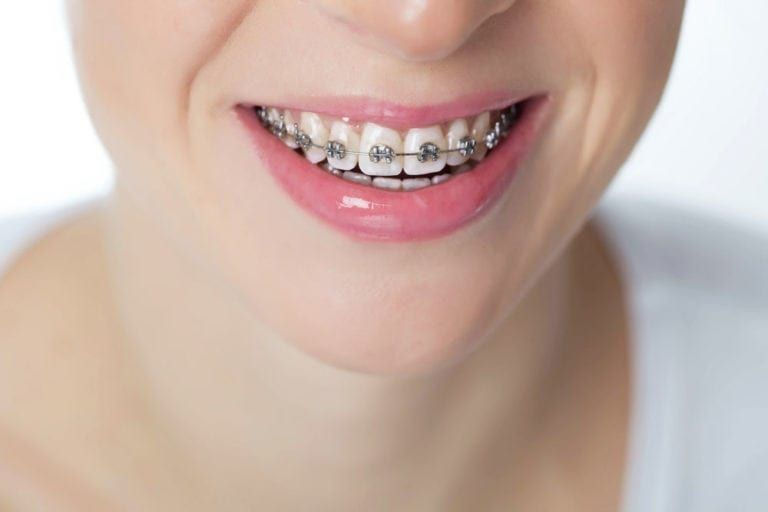How Metal Braces Straighten Teeth Step by Step Explained
- dclinicdubai
- Sep 1
- 4 min read
Metal braces have been used for decades as one of the most reliable orthodontic treatments. They work by gradually shifting teeth into proper alignment using brackets, wires, and controlled pressure. For those considering Metal Braces in Dubai, understanding how the process works step by step can make the journey less intimidating and more exciting. Braces are not just about aesthetics—they also improve oral health and functionality by correcting bite issues and misalignments.

Step 1 The Initial Consultation:
The process begins with a detailed consultation with an orthodontist. During this appointment, the orthodontist examines your teeth, gums, and jaw to determine if braces are the right treatment. X-rays, photographs, and dental impressions are usually taken to create a customized treatment plan. This step ensures your orthodontist has a clear roadmap before beginning.
Step 2 Treatment Planning:
After the consultation, your orthodontist designs a personalized plan tailored to your dental condition. The plan includes how long treatment will take, what adjustments will be needed, and the type of braces that will be used. Metal braces are often chosen because of their strength, durability, and effectiveness in treating even complex cases.
Step 3 Placement of Brackets:
The actual treatment starts when brackets are attached to the surface of each tooth. These small metal squares act as anchors for the orthodontic wires. Dental cement is used to secure them in place, ensuring they remain firm throughout treatment. This process is painless and typically completed in one session.
Step 4 Insertion of Archwires:
Once the brackets are secured, the orthodontist threads a thin archwire through them. This wire is what applies gentle and continuous pressure to the teeth. Over time, the wire guides teeth into the correct alignment. Small elastic bands or ligatures may also be used to keep the wire in place.
Step 5 Initial Adjustments:
After the braces are placed, patients usually experience mild pressure or discomfort as the teeth begin to move. This is normal and indicates that the treatment is working. The first few days may require adjustments in eating habits and oral hygiene, but most patients adapt quickly.
Step 6 Regular Tightening Appointments:
Every 4 to 6 weeks, patients return to the orthodontist for adjustments. During these visits, the orthodontist tightens or replaces the archwire to maintain pressure on the teeth. These regular adjustments are essential for steady progress and successful results.
Step 7 Tooth Movement Over Time:
Teeth move gradually as the braces apply constant pressure. The bone around the teeth adapts, allowing them to shift into their new positions. This process requires patience, as the body needs time to remodel the bone and stabilize the teeth in their new alignment.
Step 8 Correcting Bite Issues:
In addition to straightening teeth, braces also correct bite problems such as overbite, underbite, and crossbite. Rubber bands or other orthodontic appliances may be added to the treatment to guide the jaw into proper alignment. This step ensures that the results are not only cosmetic but also functional.
Step 9 Mid-Treatment Evaluations:
Throughout the treatment, orthodontists monitor progress to ensure everything is moving according to plan. Adjustments may be made to address any delays or complications. These evaluations are an important part of keeping treatment on track and achieving the best outcome.
Step 10 Final Alignment and Refinements:
As treatment nears its end, the orthodontist focuses on fine-tuning tooth positions. Small adjustments may be made to perfect the smile and bite. This stage is all about achieving precision and ensuring that every tooth is aligned correctly.
Step 11 Removal of Braces:
Once the desired results are achieved, the braces are carefully removed. The removal process is quick and painless. The orthodontist then cleans the teeth to remove any remaining adhesive and ensures that your smile is ready for the next stage—retention.
Step 12 Wearing Retainers:
After braces come off, retainers are provided to maintain the new tooth positions. Without retainers, teeth can gradually shift back, undoing the progress made. Retainers are typically worn full-time at first and then only at night, depending on the orthodontist’s instructions.
Benefits of Metal Braces:
Metal braces are widely chosen for their proven track record. Some of the key benefits include:
Effective for both mild and complex orthodontic cases
More affordable than many alternatives
Durable and resistant to damage
Capable of addressing bite and alignment issues simultaneously
Lifestyle Adjustments During Treatment:
Living with metal braces requires a few adjustments to daily habits. Patients must avoid certain foods like sticky candies, popcorn, and hard nuts that can damage brackets or wires. Oral hygiene also becomes more important, with careful brushing and flossing needed to prevent plaque buildup around the braces.
Duration of Treatment:
The length of time needed for treatment depends on the severity of the case. On average, patients wear metal braces for 18 to 24 months, but complex cases may require longer. Regular orthodontic visits and proper care help ensure treatment stays on schedule.
Final Thoughts:
Metal braces remain one of the most trusted orthodontic solutions for straightening teeth. By understanding the step-by-step process, patients can feel more confident and prepared before starting treatment. For those considering Metal Braces in Dubai, working with an experienced orthodontist ensures that the treatment is safe, effective, and tailored to your specific needs. With patience, commitment, and proper care, braces can deliver a beautiful smile and improved oral health that lasts a lifetime.


Comments